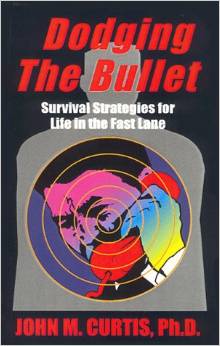Since losing the presidency to 75-year-old former President Donald Trump Nov. 3, 2016, 74-year-old former Secretary of State Hillary Rodham Clinton has reinvented herself as a critic of cryptocurrency expert, invented in 2008 by Satoochi Nakamora, the fictional name or amalgam of characters that wrote the White Paper and complex code for Bitcoin, now trading at 59,281,81. Hilary’s best known for shaking down world leaders while secretary of state, adding millions of dollars to the Clinton Foundation or Clinton Global Initiative. Once Hillary lost the election to Trump, she was so worried about an FBI investigation into her co-owned foundation with her 75-year-old husband former President Bill Clinton she shut down the foundation. Hillary isn’t known for her keen financial advice, she’s known for spawning conspiracy theories about Trump’s ties to the Kremlin, now thoroughly debunked.
On a Webcast for Bloomberg’s New Economy Forum in Singapore, Malaysia, Hillary told the conference that cryptocurrency threatened the U.S. dollar as a reserve currency, bringing billions, if not trillions, of dollars into the U.S. to invest in treasury bonds. Hillary thinks cryptocurrencies will undermine the U.S. dollar and other foreign currencies, when, in fact, they’ve actually enhanced currency exchanges and stock markets around the world. Bitcoin has a market cap of $1.2 trillion compared with Apple Inc.’s market cap of $2.63 trillion or Tesla Motors $1.42 trillion market cap, all the world’s most valuable companies. But unlike other widget-makers, Bitcoin, Ethereum, Binance, etc, offer only market growth tied to finite amounts of cryptocurrencies, traded essentially like stocks on crytocurrency exchanges. Cryptocurrencies are another example of highly speculative stock market investments.
Hillary knows nothing about the complex software created fir crtypticurrency exchanges AKA “blockchain,” a type of digital recordings system on advanced computers to record all the crypto currency transactions, making the transactions secure and unhackable.. “What looks like a very interesting and somewhat exotic effort to literally mine new coins in order to trade with them has the potential for undermining currencies, for undermining the role of the dollar as a the reserve currency, for destabilizing nations, perhaps starting with small ones abut going much larger,” Hillary said. Hillary knows that today’s “fractional reserve banking” system is essentially built on smoke-and-mirrors, with banks lending out over 90% of capital reserves invested in the world’s biggest institutions, banks and insurance companies. Hillary’s warning mirrors concerns of central banks around the globe.
Cryptocurrency exchanges operate like central banks around the global, creating out of thin air currency with nothing to back it up with anything concrete. How different are cryptocurrency exchanges from central banks that actually create currency out of thin air? U.S. Federal Reserve ended reliance on the gold standard in the 1934 Gold Reserve Act, that stopped backing U.S.-issued gold certificates with real gold. Over 30-years later, the U.S. stopped backing silver certificates in 1965 with real silver. So when it comes to cryptocurrency, what could be more secret than the Federal Reserve Board, operating independent of Congressional accountability and oversight. Federal Reserve Board orders the U.S. Treasury to print more currency, then tacks it onto the National Debt. No crpytocurrency exchange adds to the National Debt but they mine currency, so-called Bitcoins, out of thin air.
Governments continue to struggle with cryptocurrencies, largely because they’ve held dollar or other currency-denominated investments in the past. China recently banned privately held cryptocurrencies, thinking they can manipulate its yuan through its central banking system. Some governments worry what happens if countries start using cryptocurrency exchanges instead of currency-backed investments. Hillary thinks it could break foreign currency markets. But in reality, cryptocurrency markets are simply an alternative investment strategy that could pay richer dividends than investing in central bank currency investments. Take the U.S. Federal Reserve, for example, they return 1.58% on cash investments over 10 years. Bitcoin has returned astronomical returns over the last 10 years, starting a $320 Sept. 9, 2014 to its close Nov. 19 close at $59,281,81, thousands of percent return on investment [ROI].
Central banks, commercial banks and government officials don’t understand the stability and reliability of cryptocurrenices compared with other kinds of investments. Calling Hillary’s remarks “spot-on,” economic regulator expert John Reed Stark agreed with Hillary’s concerns about cryptocurrenices. “The investment in cryptocurrency goes against every basic rule of investor protection,” Stark said. “Bitcoin and other crpytocurrencies trade on platforms that don’t have any of the safety mechanisms that traditional exchanges have,” fearing that there are no circuit breakers in the even of a market crash. But Stark surely knows that when Wall Street melts down periodically, there are no insurance for stock market-related investments. Where’s the safety mechanism on Wall Street? Crytocurrencies are no different than any Wall Street-related investment, no safer, no riskier.



